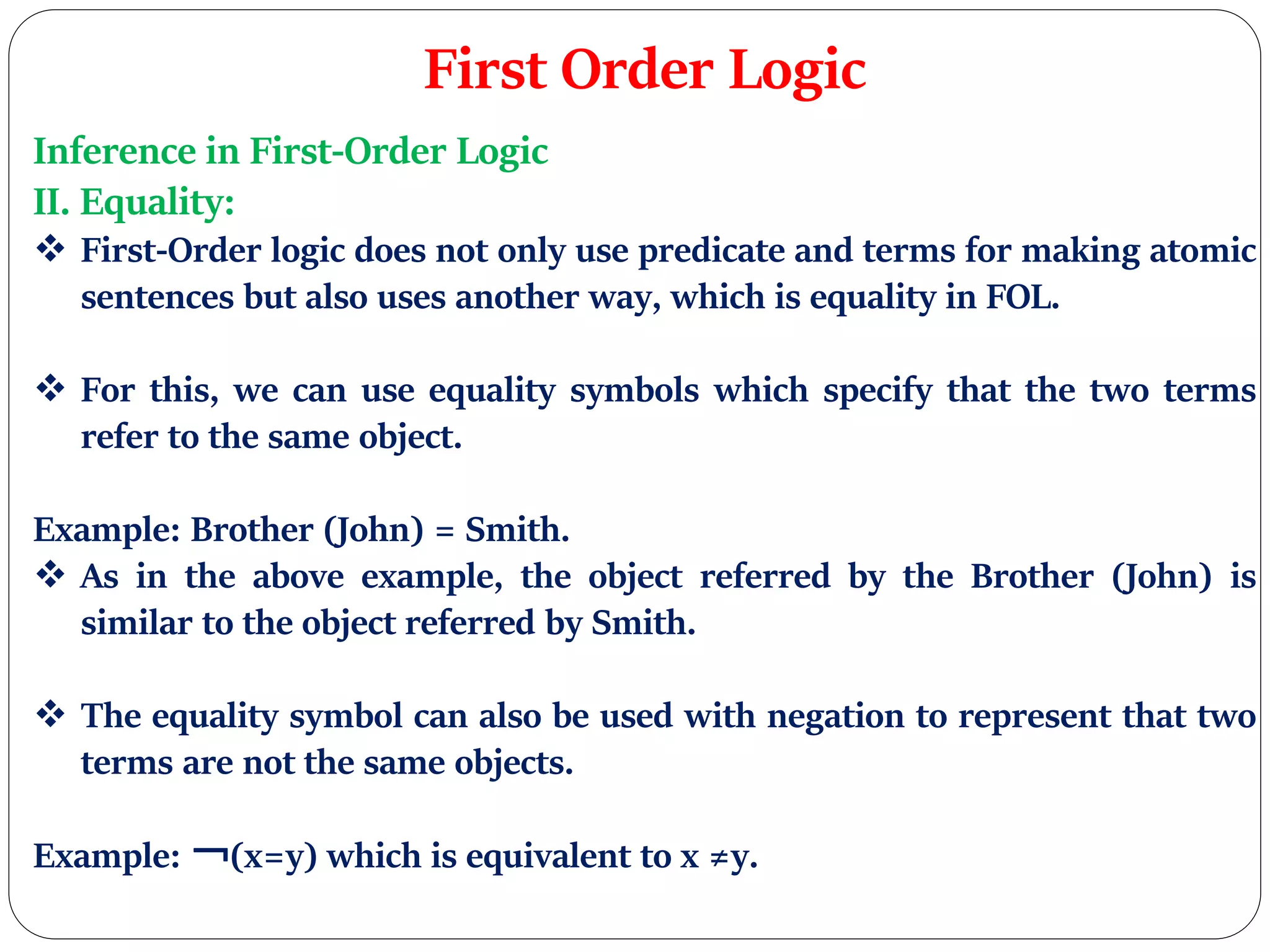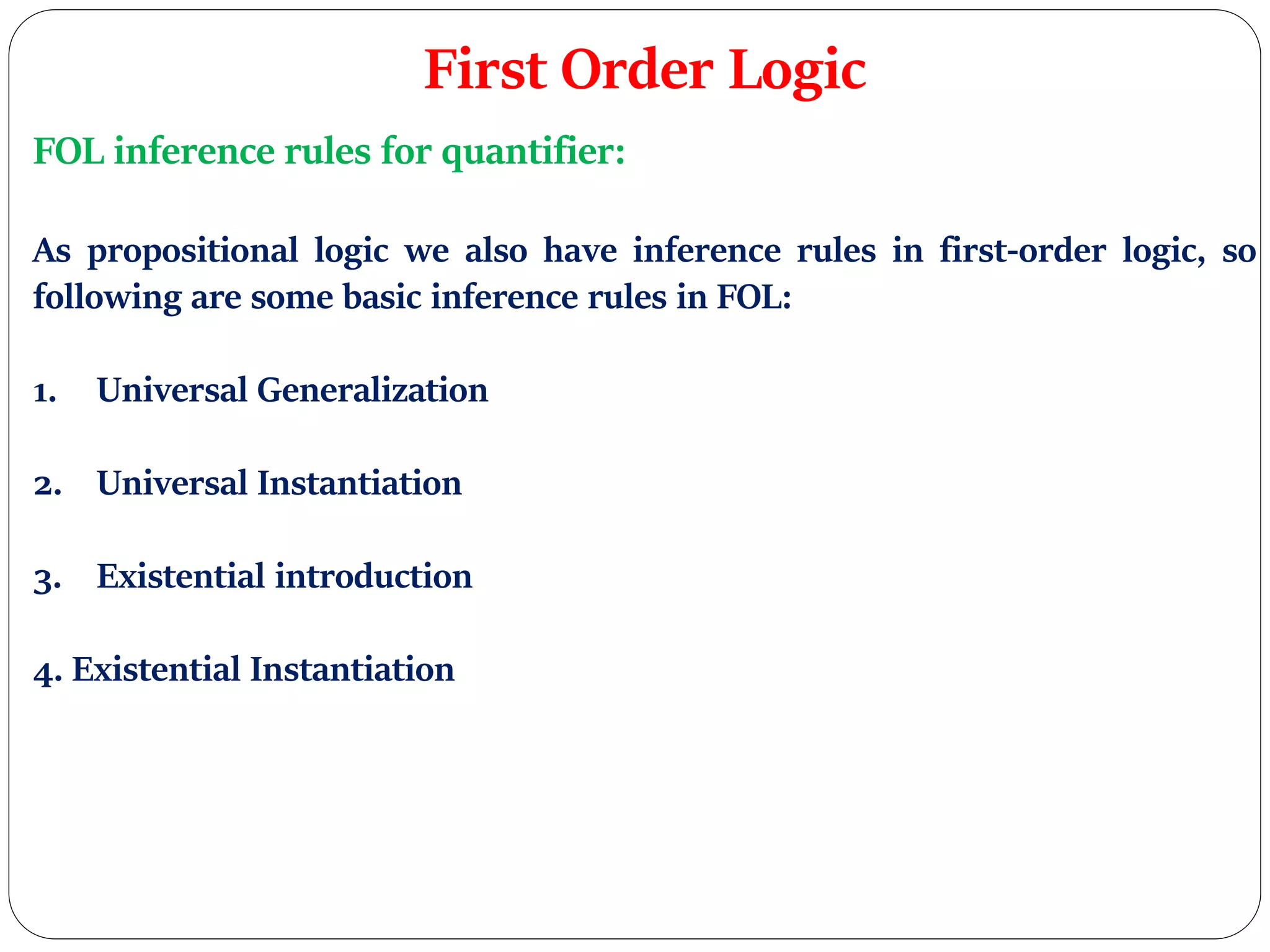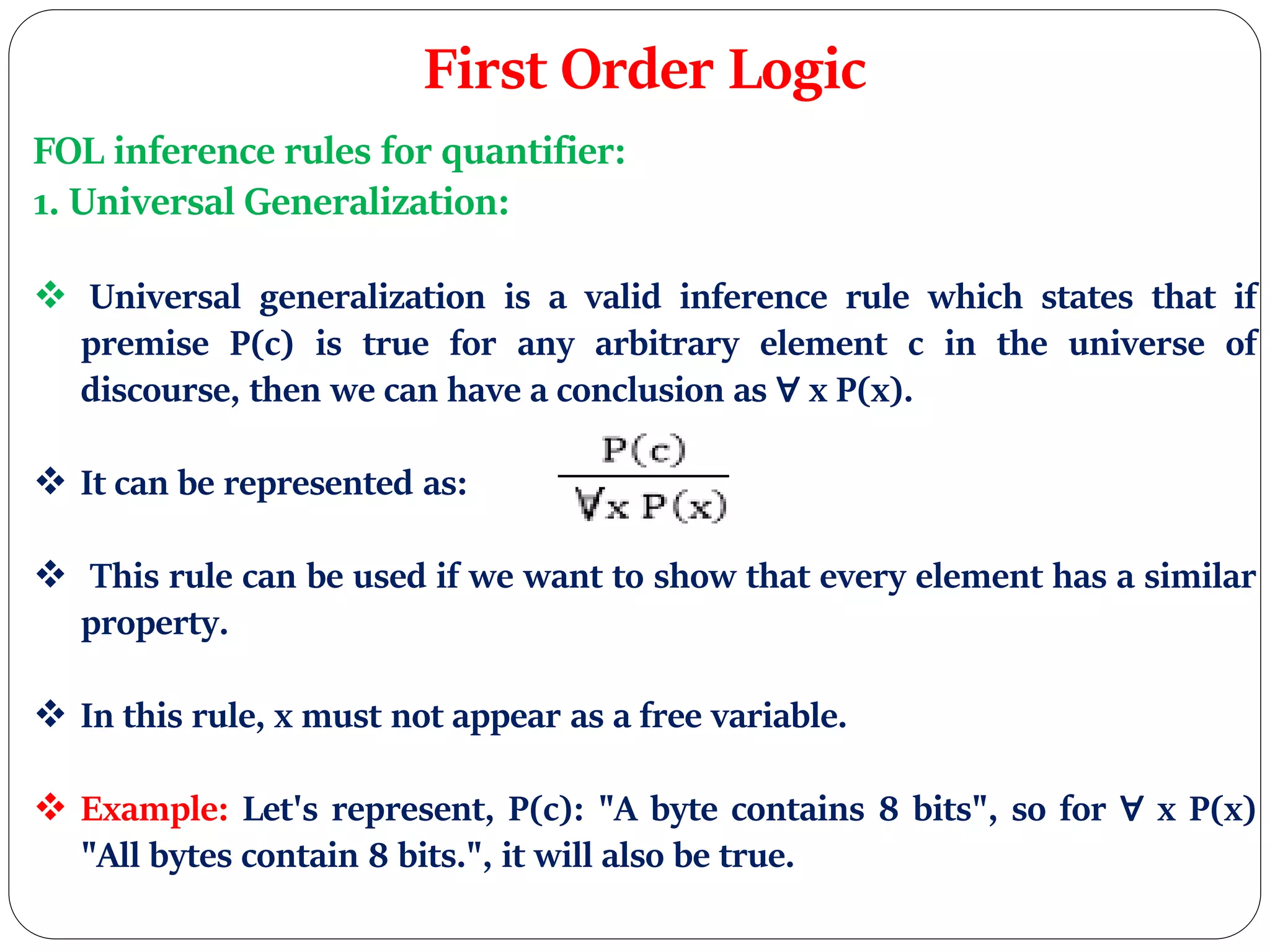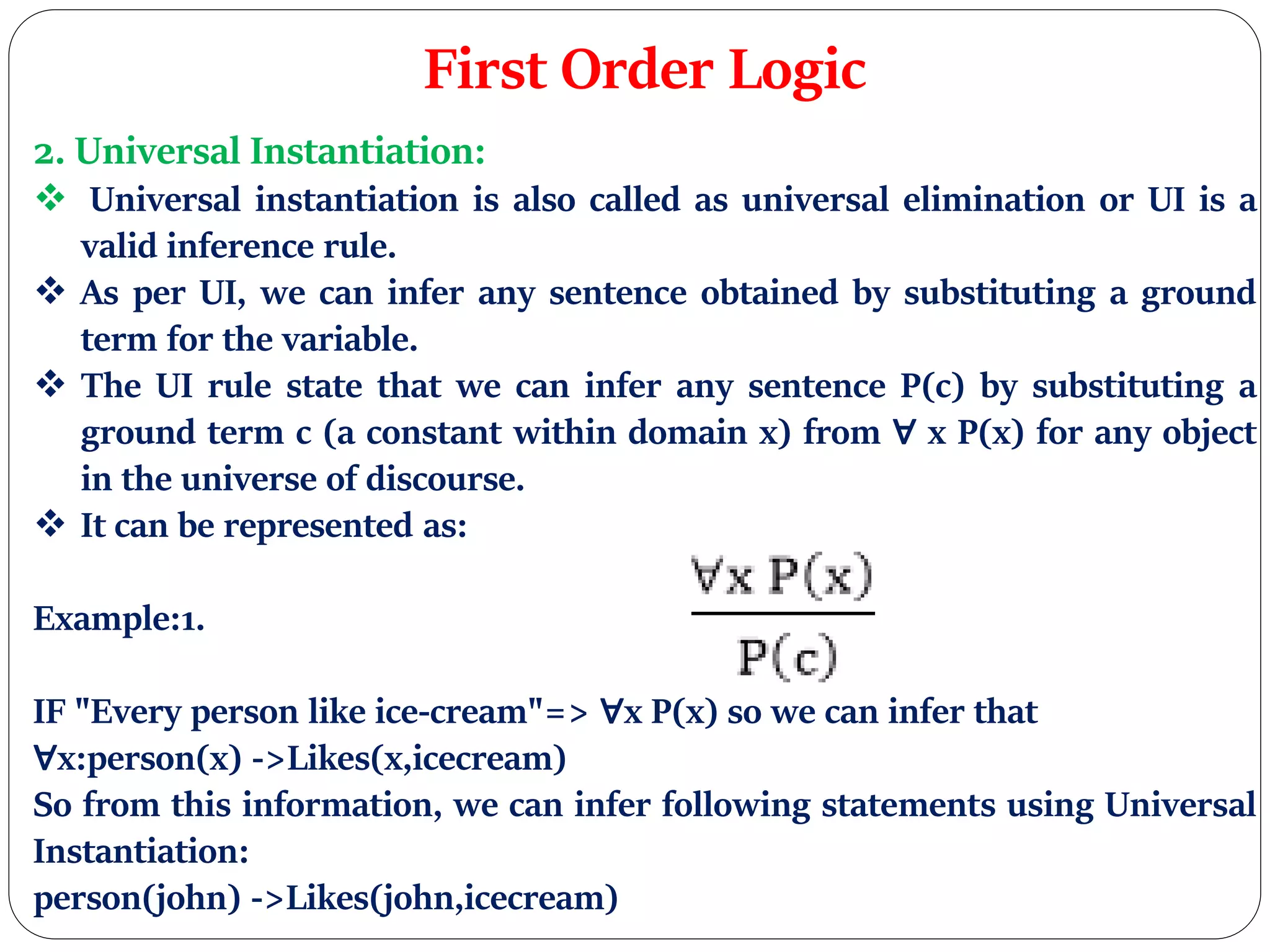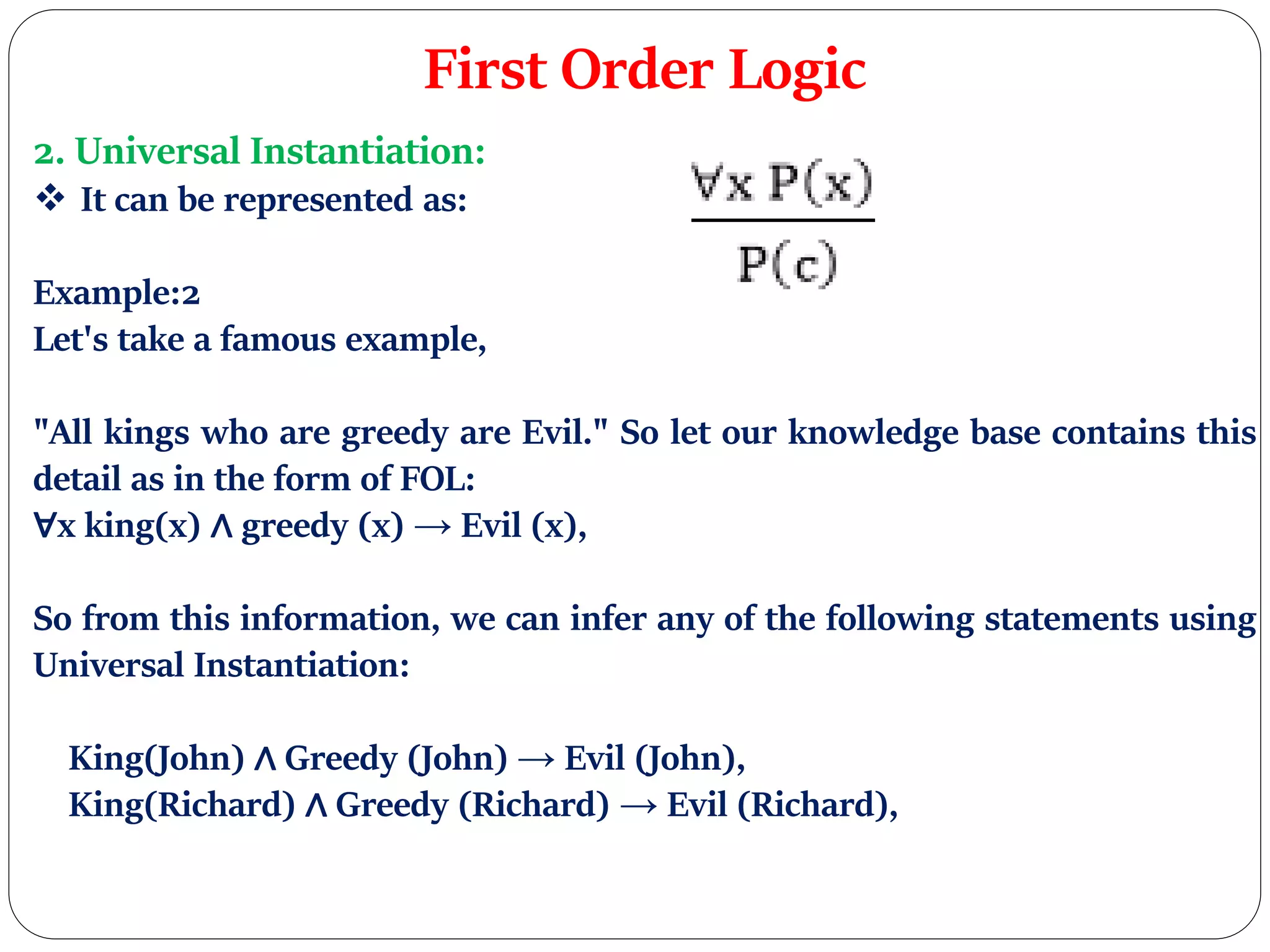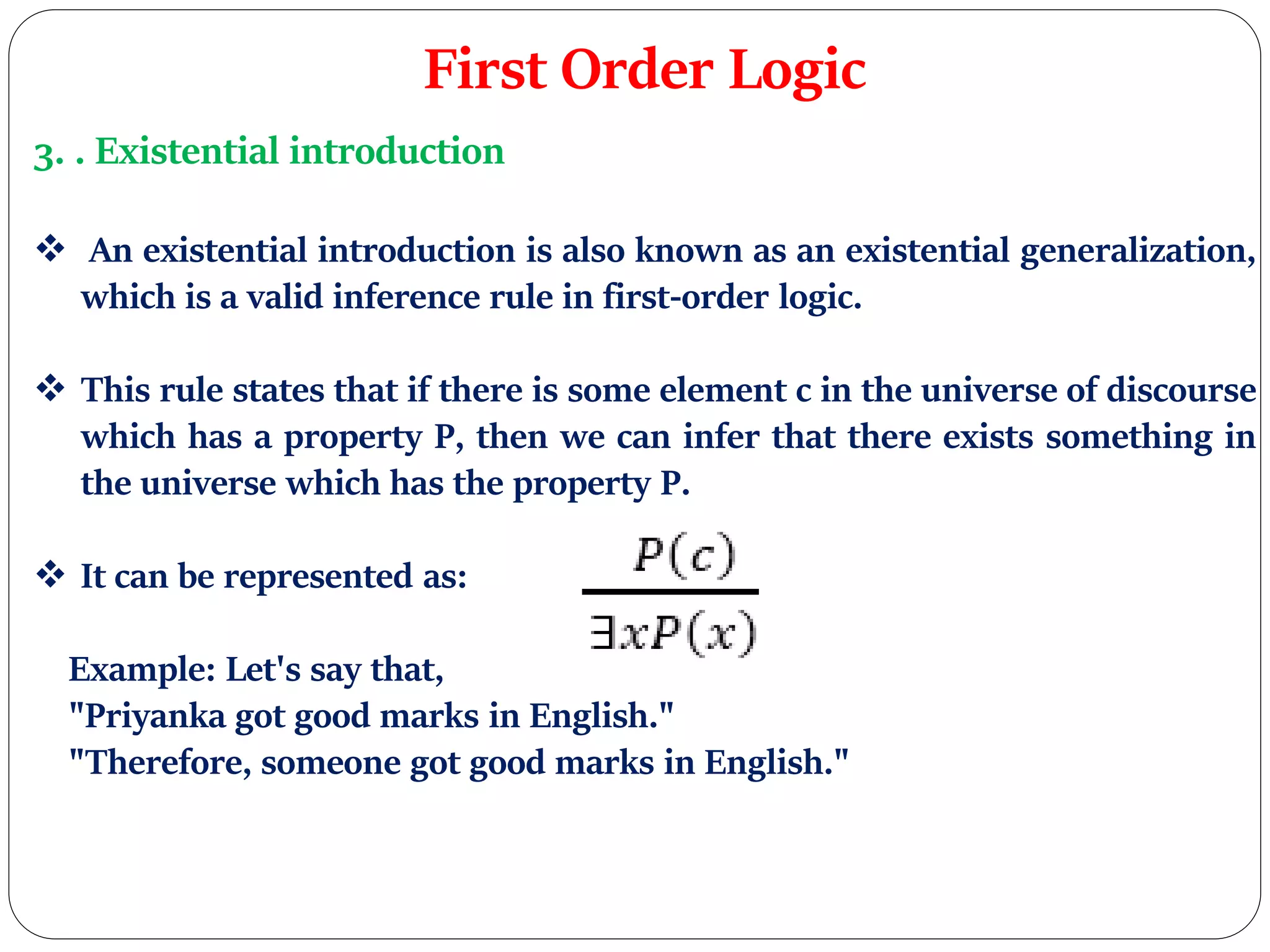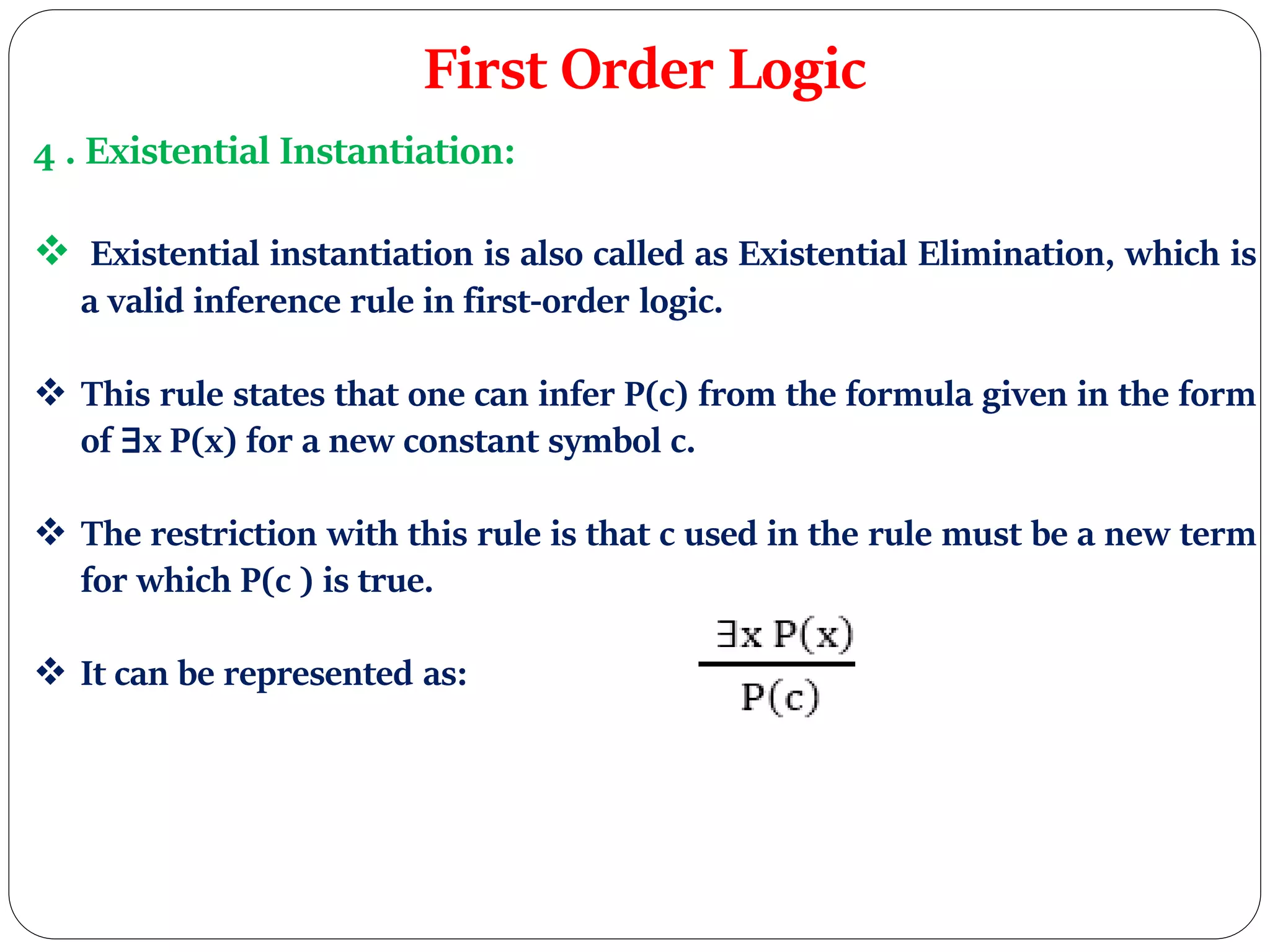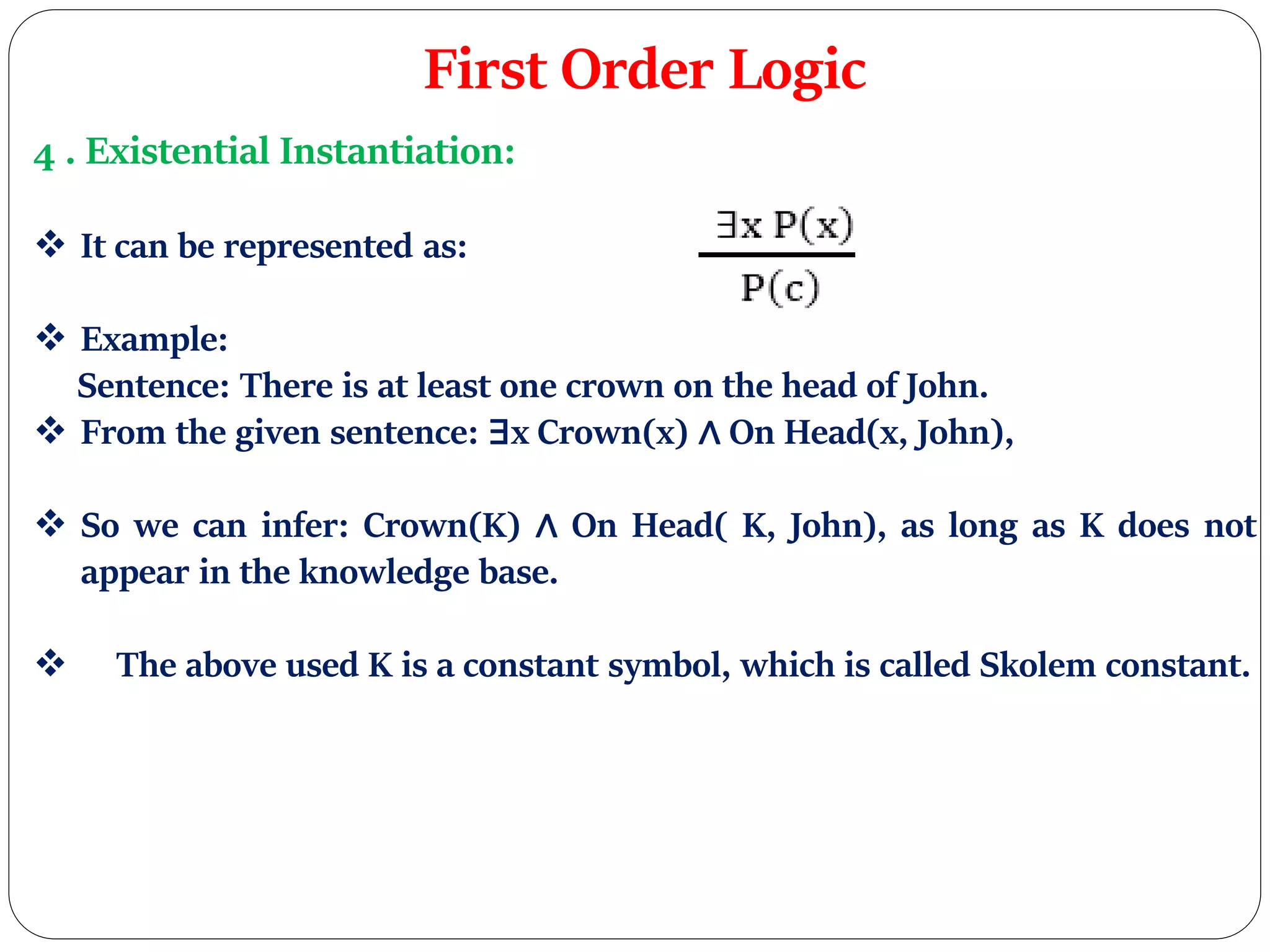The document discusses first-order logic (FOL) and its inference processes, focusing on key concepts like substitution and equality. It outlines various inference rules such as universal generalization, universal instantiation, existential introduction, and existential instantiation, including examples for better understanding. The content is aimed at educating students on the significance of these logical principles in artificial intelligence and robotics.
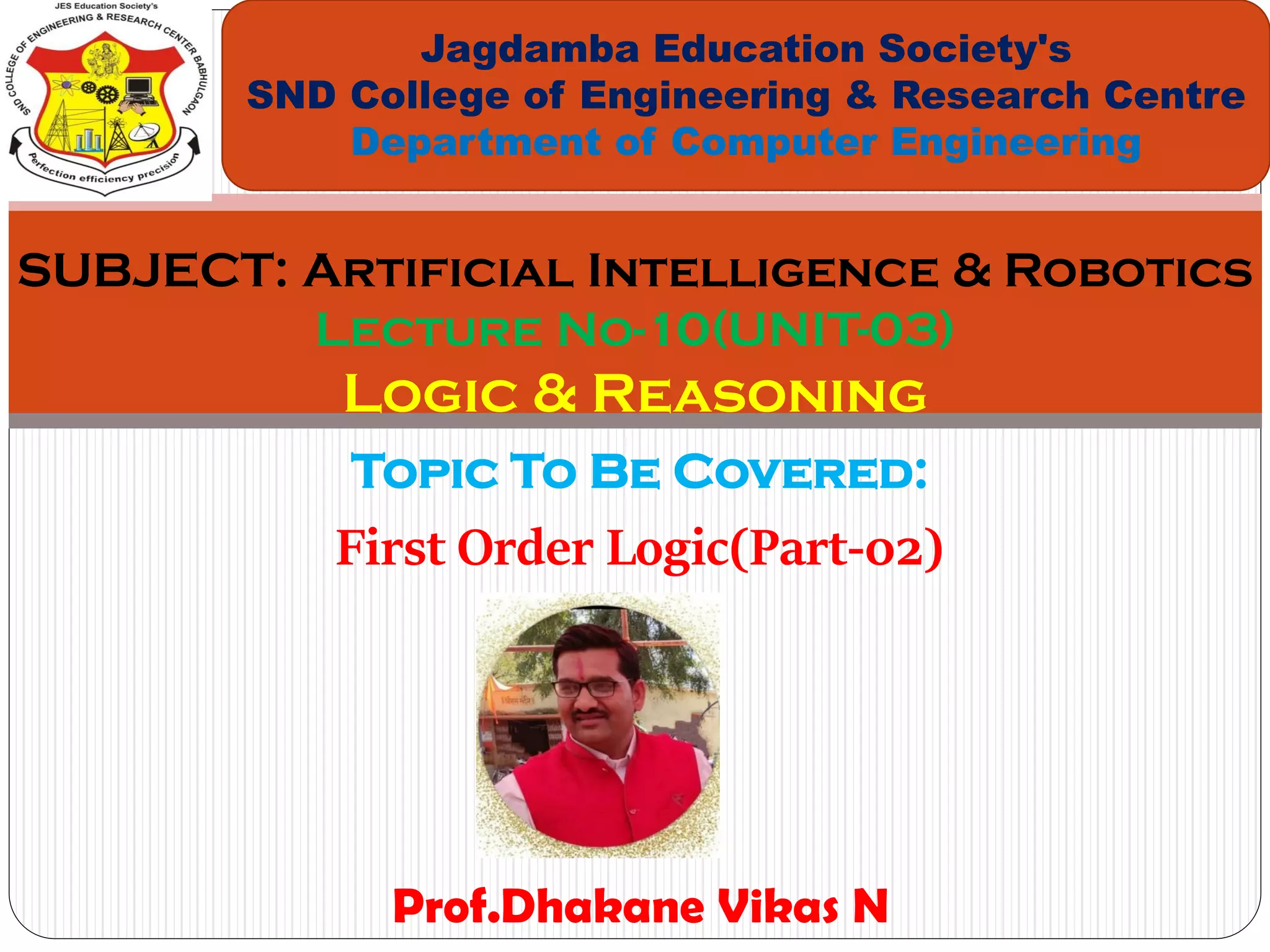
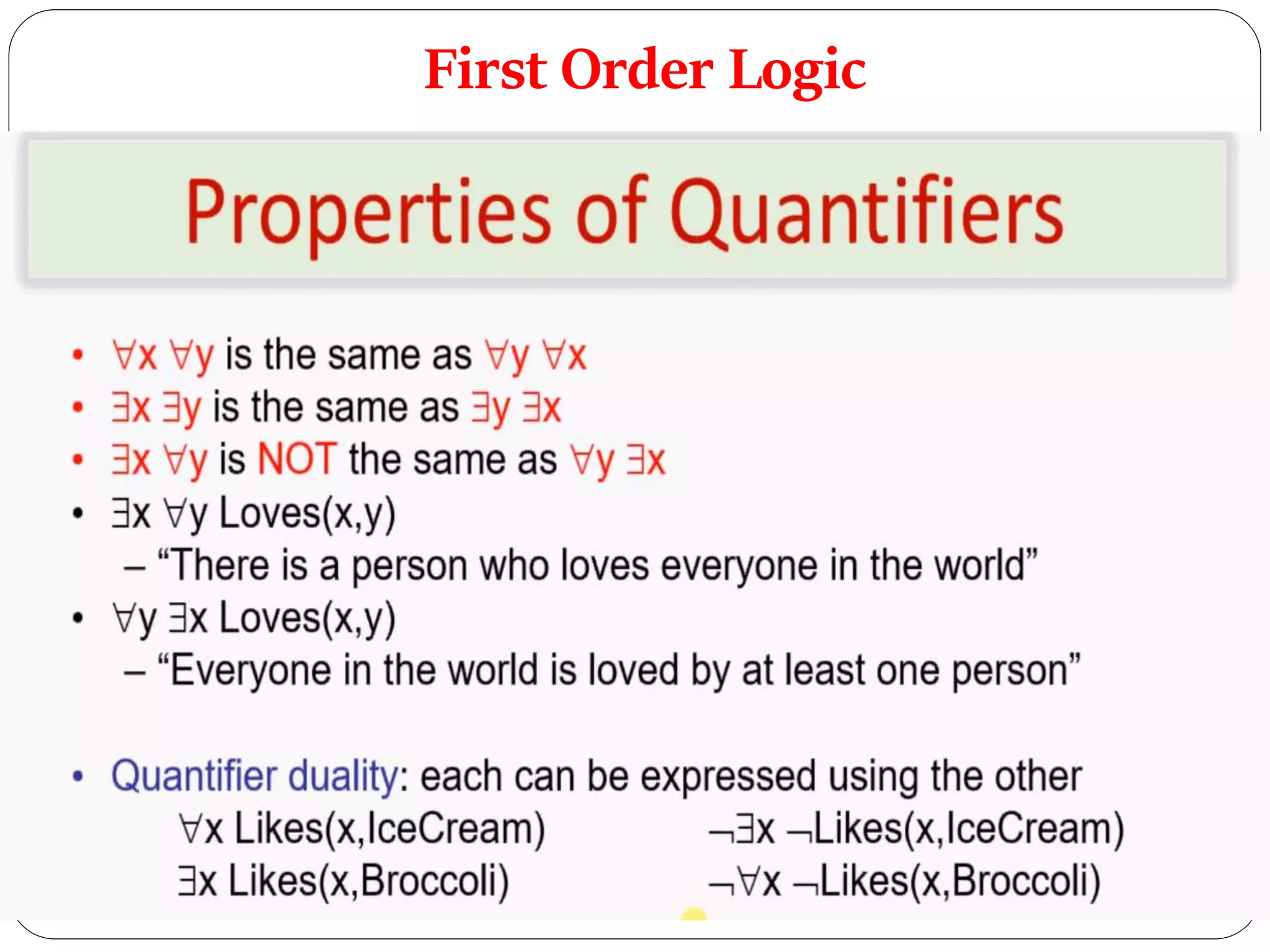
![First Order Logic
Inference in First-Order Logic
Inference in First-Order Logic is used to deduce new facts or sentences
from existing sentences.
understanding the FOL inference rule, let's understand some basic
terminologies used in FOL.
I. Substitution:
Substitution is a fundamental operation performed on terms and
formulas.
It occurs in all inference systems in first-order logic.
The substitution is complex in the presence of quantifiers in FOL.
If we write F[a/x], so it refers to substitute a constant "a" in place of
variable "x".](https://image.slidesharecdn.com/ailecture-10unit03-210506093118/75/Ai-lecture-10-unit03-3-2048.jpg)
